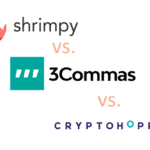You must have come across the word “token” a lot of time. Tokens are a particular type of value-based entity that can either represent a security or a utility. There are many types of tokens, for example, utility token, non-fungible token, security token.
These tokens are native to the blockchain platform upon which they are developed. For example, CryptoKitty is a non-fungible token based on the Ethereum blockchain. It can be used in the context of Ethereum only and cannot be used in other cryptocurrency platforms like Bitcoin.
So, based on this functionality, tokens can be classified as security tokens or utility tokens.
Security token vs utility token
Here is an analogy that can simplify your understanding of security and utility token. You can compare utility token to Amazon gift cards, which don’t guarantee any profit but lets you access Amazon services with some privileges.
On the other hand, security tokens can be compared with Amazon share that may guarantee you profit depending on the price moment of Amazon share price.
So, what leads to the origin of a security token?
- Unregulated Initial Coin Offerings (ICO) which can be compared to IPO version of cryptocurrency.
- Increase in fraud and scams
To make ICO more secure and regulated, the Securities and Exchanges Commission (SEC) stepped in. They found out that ICO satisfied the Howey test which states that –
- The security should involve an investment of money.
- The investment should be done in a common enterprise.
- The investment should return a profit.
- The profit should be determined by promoters and third parties.
Since ICO fulfilled the criteria needed to become security, this laid down the foundation of Security Token and eventually converted ICO to Security Token Offering or STO.
Security Token usually represents a share of the company and are fungible assets. Now, to make STO secure and decentralized, three regulations were formed. They are –
Regulation D —
- Allowed a particular offering to be exempted from being registered by the SEC, if ‘Form D’ has been filled by the creators.
- The form filling has to be done after the securities have been sold.
- An individual who offers this security might solicit offerings from investors in compliance with Section 506C, which requires that the investors are accredited, and the solicitation is free from false claims.
Regulation A+ —
- Allowed the creator of the token to offer security for non accredited investors as well as accredited investors.
- The limit for the investment is set at $50 million. The issuance takes more time and costs more than any other option.
Regulation S —
- Applied to a security token offering that is executed outside the United States.
- It requires the company to follow the regulatory requirements of the country where it is supposed to be executed.
Advantages of Security Token-
- Regulated, secure, and free of scam.
- Faster than IPO and more secure than ICO.
- Provide transparency
- Promotes democracy in investment
With all that said, uses of security token are still subjected to the validation of users. They still have certain disadvantages, such as the involvement of middleman and third parties. But with further advancement in technology, STO will see a lot of improvement, and one day it may even replace IPO.
If you want to learn more about the Crypto ecosystem, sign up for the weekly newsletter.









